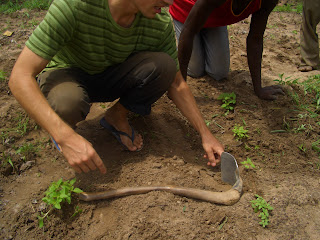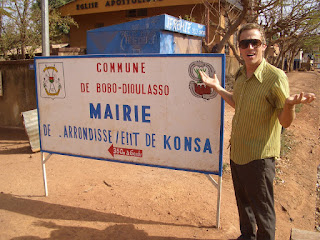Planting Season 2010

One man's attempt to share stories, impressions and ideas as he serves just over two years in the Peace Corps in the west African nation of Burkina Faso. ...(by the way...this is not an official peace corps site)





Labels: Burkina Faso, development, small business, soap making




Labels: africa, development, entrepreneur, small business









 The oustide walls of the same castle:
The oustide walls of the same castle:
 Below is the flag of Ghana planted in the beach at Busua. This place was way too much fun, and we literally had the entire beach to ourselves, save for a few local fishermen and surfers! :
Below is the flag of Ghana planted in the beach at Busua. This place was way too much fun, and we literally had the entire beach to ourselves, save for a few local fishermen and surfers! :





 A Women's group cleaning and drying plastic store sacks before turning them into 'thread' to weave clothes (see blazer below!) and beautiful hand bags. Smart, resourceful and job producing!
A Women's group cleaning and drying plastic store sacks before turning them into 'thread' to weave clothes (see blazer below!) and beautiful hand bags. Smart, resourceful and job producing! A blazer made entirely of recycled plastic sacks!
A blazer made entirely of recycled plastic sacks!  This is how trucks are typically (over)loaded here in West Africa! and yes, they do tip over from time to time, so dont linger on the side of one!
This is how trucks are typically (over)loaded here in West Africa! and yes, they do tip over from time to time, so dont linger on the side of one! I nearly fainted when I saw this sign announcing the Mayors office(mairie) of the Konsa district (arrondissement) of the major city of Bobo Dioulasso in the southwest of Burkina.
I nearly fainted when I saw this sign announcing the Mayors office(mairie) of the Konsa district (arrondissement) of the major city of Bobo Dioulasso in the southwest of Burkina.